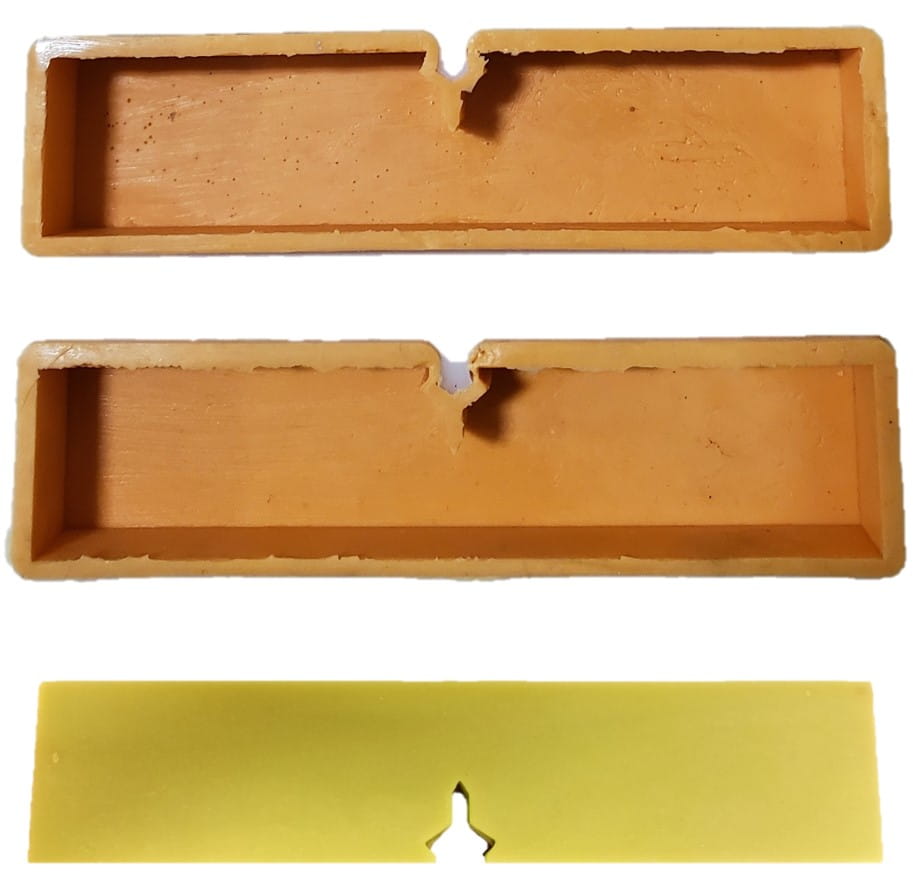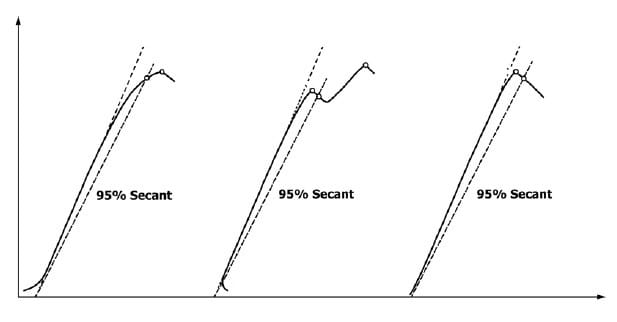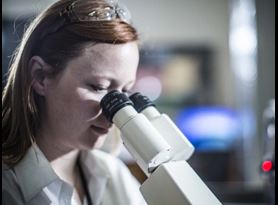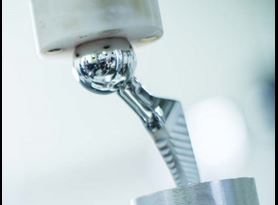Article
测试Fracture Toughness of PMMA Bone Cement
Bone cement fixates joints during arthroplasty surgery on knees, hips, shoulders, and elbows by filling the space between the implant and the bone. In this article, we discuss the methodology for measuring fracture toughness of polymethyl methacrylate (PMMA) bone cement.
聚甲基丙烯酸甲酯是骨水泥最常见的形式,可以有几种不同的品种。化学配方可以调整,或水泥可以浸渍抗生素剂,这可以改变力学性能。骨水泥最重要的功能是将载荷从植入物转移到骨上,并吸收两者之间的冲击。因此,了解失效模式和抗断裂性能是评估性能的关键。
Bone cements are usually provided as a two-part epoxy, consisting of a powder and a liquid that are mixed. Upon mixing, the bone cement transforms from a runny liquid into a dough-like material that can be molded into the space. An exothermic reaction takes place during the polymerization process, and cures into a hardened cement, fixing the implant in place.
There are several test methods that can be used to evaluate the bone cement properties:
- ASTM F451-丙烯酸骨水泥标准规范
- ASTM F2118-丙烯酸骨水泥材料的恒定振幅力控制疲劳试验方法。乐动娱乐官网
- ISO 5833-外科植入物丙烯酸树脂粘合剂
然而,本文将特别概述使用ASTM E399和ASTM D5045方法测试PMMA骨水泥的平面应变断裂韧性。
PMMA骨水泥断裂韧性的评价
ASTM E399和ASTM D5045标准的目的is to determine the fracture toughness (K1C) of metallic or plastic materials. Fracture toughness testing is performed under predominantly linear-elastic, plane-strain conditions. The typical specimen geometries used are compact tension (CT) and single edge notch bending (SENB).
In the example described here, testing was conducted on medical-grade PMMA bone cement using the equations, specimen design and test methods described in ASTM E399 and ASTM D5045. We used a SENB specimen geometry, and a K1C value was reported.
Specimen design
Selecting the proper specimen size and geometry is important to ensure plane-strain conditions at the crack tip are met. A sharp starter notch is needed to ensure a valid fracture toughness value is obtained.
When selecting suitable specimen geometries, several factors are considered, including the amount of material available, cost of material, the orientation of the crack and the difficulty to produce a test specimen. As most bone cement is used in smaller quantities and different geometries, trying to standardize a specimen is difficult as the common sizes have limited physiological relevance. The bone cement test specimen is created by mixing the liquid and powder at the appropriate ratios using the manufacturer’s recommended technique and pouring into a custom mold made to replicate the SENB geometry. This geometry uses less material and makes it easier to machine the material down to the final specimen size.
试样制作
The custom mold used for creating a specimen is fabricated with food-grade silicone and Delrin material to provide sufficient stiffness (Figure 1). The mold is slightly over-sized and includes integral knife edges to allow for machining once the test specimen has formed and cured. This allows the removal of irregular surfaces and any distortion that occurred while the cement cured. Additional steps are taken to clean and prepare the specimens for testing.

Test method
The primary focus of this test is to subject the PMMA bone cement to plane-strain conditions. To test plane-strain conditions, a sharp notch is used to initiate a crack in the desired location of the specimen. The crack can be generated by fatigue load, typically referred to as a fatigue pre-crack (ASTM E399) or a razor blade pressed into the specimen, creating a sharp notch and crack (ASTM D5045).
如果水泥具有脆性,疲劳预裂效果最好。将SENB试样加载到ASTM E399规范中概述的三点弯曲夹具(图2)中,以产生疲劳预裂纹并进行断裂韧性试验。

If the cement exhibits ductile behavior, the preferred method is that described in the ASTM D5045 specification. This method calls for a razor blade to be pressed into the notch to create a crack similar to the fatigue pre-crack method. It is critical that the notch is straight and extend no less than 0.050” into the specimen when using either the fatigue pre-crack or razor blade method. After a crack has formed penetrating dyes assist in differentiating the crack and the fracture toughness test on the specimen’s fracture surface.
断裂韧性试验采用与疲劳预裂法相同的夹具。对于聚甲基丙烯酸甲酯骨水泥,ASTM E399中的加载速率太快,会导致不一致的结果。ASTM D5045中描述的修正位移率适用于该材料,并提供了更一致的结果。建议对每种材料条件进行三次或更多试验。
After specimens are loaded, a load versus loading point displacement curve is generated. The data output is routed through multiple calculations that determine the K1C value.
报告和分析
ASTM E399和D5045是脆性材料的理想试验方法。存在三种力位移模式(图3),与初始线性部分有95%的偏差(或割线)。在该图乐动娱乐官网上,95%偏差与试验数据交叉的点对于确定试验有效性很重要(它符合K1C——证明试样尺寸足以满足平面应变条件)。当95%偏差交叉点与最大力之间的差值增大时,试验无效的可能性越大。如果差异太大,ASTM E399允许使用替代试验方法。

影响试验有效性的其他因素是预裂长度、预裂平直度和加载速率。如果其中任何一项无效,则必须将最终断裂韧度值报告为无效。但是,断裂韧性值无效并不意味着数据不可用。无效值可用于与有效断裂韧性值相同的应用中,但如果需要有效断裂韧性值,则需要额外的试验来调查导致无效的因素。改变试验参数或试样尺寸不能保证有效的断裂韧度值。
整体测试输出(K1C)测量材料在存在缺陷时抵抗断裂的能力,这对于理解骨水泥的性能至关重乐动娱乐官网要。
要素优势
Our Engaged Experts excel atmedical device testingand have worked with many challenging device designs and test setups over the last several decades.联系我们to discuss how we can help with your test project.
元素has one of the most expansive medical device testing scopes in the world, ranging from orthopedics and cardiovascular implants testing to EMC/EMI/product safety testing, and biological and packaging evaluations. We strive to meet all your medical device testing needs in the most expedient, efficient and responsive way.
通过网站找到与您相关的文章Nucleus
获取白皮书、更新和活动邀请
订阅内容更新
making certain for nearly 190 years
更多来自元素

Test Protocol for Medical Devices
A protocol and plan will mitigate your risk, prevent confusion, set clear expectations, and preserve the necessary information for future reference and use.
Read More

Preventing Fretting Corrosion of Orthopedic Devices
人体是一个腐蚀性的环境,会影响骨科设备的性能。本文概述的测试方法有助于防止设备设计中的微动腐蚀。
Read More

股骨膝关节组件的疲劳试验
股骨膝盖组件的疲劳试验是验证过程中的一个重要步骤,以确保患者安全和设备寿命。向我们的专家学习。
Read More

骨科植入物测试
As a global leader in orthopedic implant testing, Element has years of experience in evaluating hip replacements, knee prostheses, spinal devices and many other implants.
阅读更多
